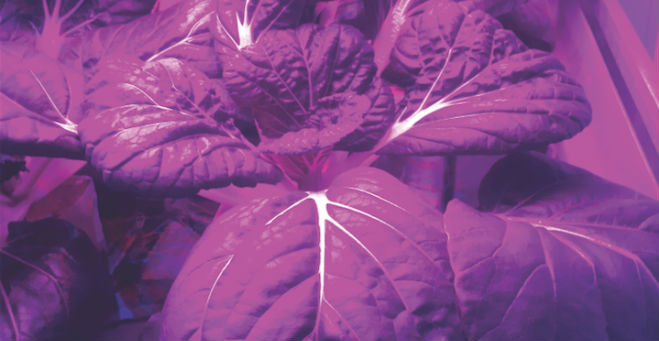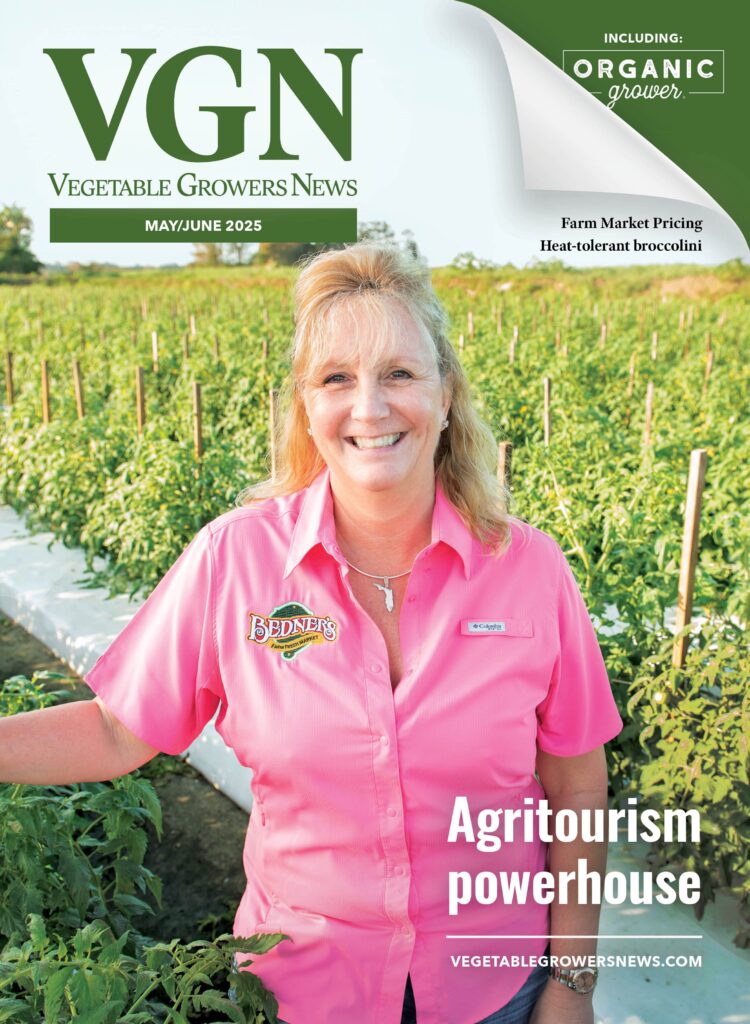
Sep 6, 2016LED lighting solutions create recipe for optimum plant growth
Vegetable producers, whether they grow under tunnels, in the field or in greenhouses, face a number of challenges. The growing environment can be difficult to control. Insect pests, disease and weeds can damage crops and limit yields. The space needed to grow those crops also comes at a premium, often far from city centers where demand for local is high and consumers expect sustainable production. Perhaps one of the biggest challenges, at least for greenhouse growers, is the cost of energy, which can soar – especially in colder climates.
What if all of those challenges could be addressed by applying one simple technology? Some producers have done so, and they’re pleased with the results.
Philips Lighting
Hidden inside the prominent Philips Lighting building in Eindhoven, the Netherlands, is the state-of-the-art GrowWise Center. Here, researchers work to provide tailor-made LED light growth recipes for producers who wish to grow healthy, quality food indoors year round. The facility is concentrating its research on optimizing recipes for leafy vegetables, strawberries and herbs. Other areas of research are looking at growing wheat and potatoes indoors.
The aim of their work is to develop technology that will make it possible to grow tasty, healthy and sustainable food virtually anywhere, said Gus van der Feltz, Philips global director of city farming.
“This new GrowWise City Farming research center aims to take city farming to the next level, with Philips’ scientists leading research into LED light recipes for vegetable and cereal production,” van der Feltz said. “The research we are undertaking will enable local food production on a global scale, reducing waste, limiting food miles and using practically no land or water.”

LED lighting addresses a number of consumer trends, including how food is grown and the distance it travels to get to our plates. It addresses the concerns of farmers, too. LED lighting has improved the taste, quality and health of vegetables; reduced losses due to pests, disease and weed pressure; and reduced overall energy costs, said Robert Colangelo of Green Sense Farms in Indiana.
Colangelo, a producer of microgreens, baby greens, culinary herbs and lettuces year round, runs the world’s largest commercial farm using LED lights. Installing lighting into his 30,000-square-foot warehouse was an expensive endeavor, but one he deemed worth it. Not only can Colangelo provide the local market with produce year round, he can do so without the use of chemical inputs and using less energy.
The enormous warehouse contains two climate-controlled rooms. Each room is equipped with seven 12-meter grow towers; the towers contain 7,000 Philips GreenPower LED production modules.
“Growing indoors is a lot less risky than growing outdoors,” Colangelo said.
Why? Because everything the plant needs can be controlled, he said, including the volume of active light, temperature, humidity and nutrients.
“Having lights that produce less heat and PAR (higher photosynthetic active radiation) and use less electricity are much more sustainable, better for the environment and better for our business because they’re more economical,” he said.
Because they emit less heat than traditional fluorescent lights, the lights can be placed quite close to the plants. Less heat means lower energy consumption, as excess heat in traditional greenhouses needs to be removed. More plants mean increased production per square foot. That extra space allows Green Sense Farms to supply the local market with some 1.5 million tons of produce, he said.
The perfect recipe
Perhaps one of the most unique perks of growing crops under LED lighting is that producers can play with the diodes of color, allowing them to manipulate plant height, width, color and taste. Red light, for instance, affects height, and blue affects width.
“Having the right combination of red and blue will give you the optimum plant growth,” Colangelo said.
In the future, Colangelo hopes to work with seed companies to develop varieties more suited to LED production.
The benefits don’t end with production, though. Since Green Sense Farms was built in an industrial park next to an interstate highway, it’s a short drive to the surrounding states.
“We can hit 80 percent of the U.S. population within a day’s drive of our farm,” he said. “And we touch four states, so we can basically serve the Midwest very efficiently.”
— Melanie Epp, VGN correspondent
















